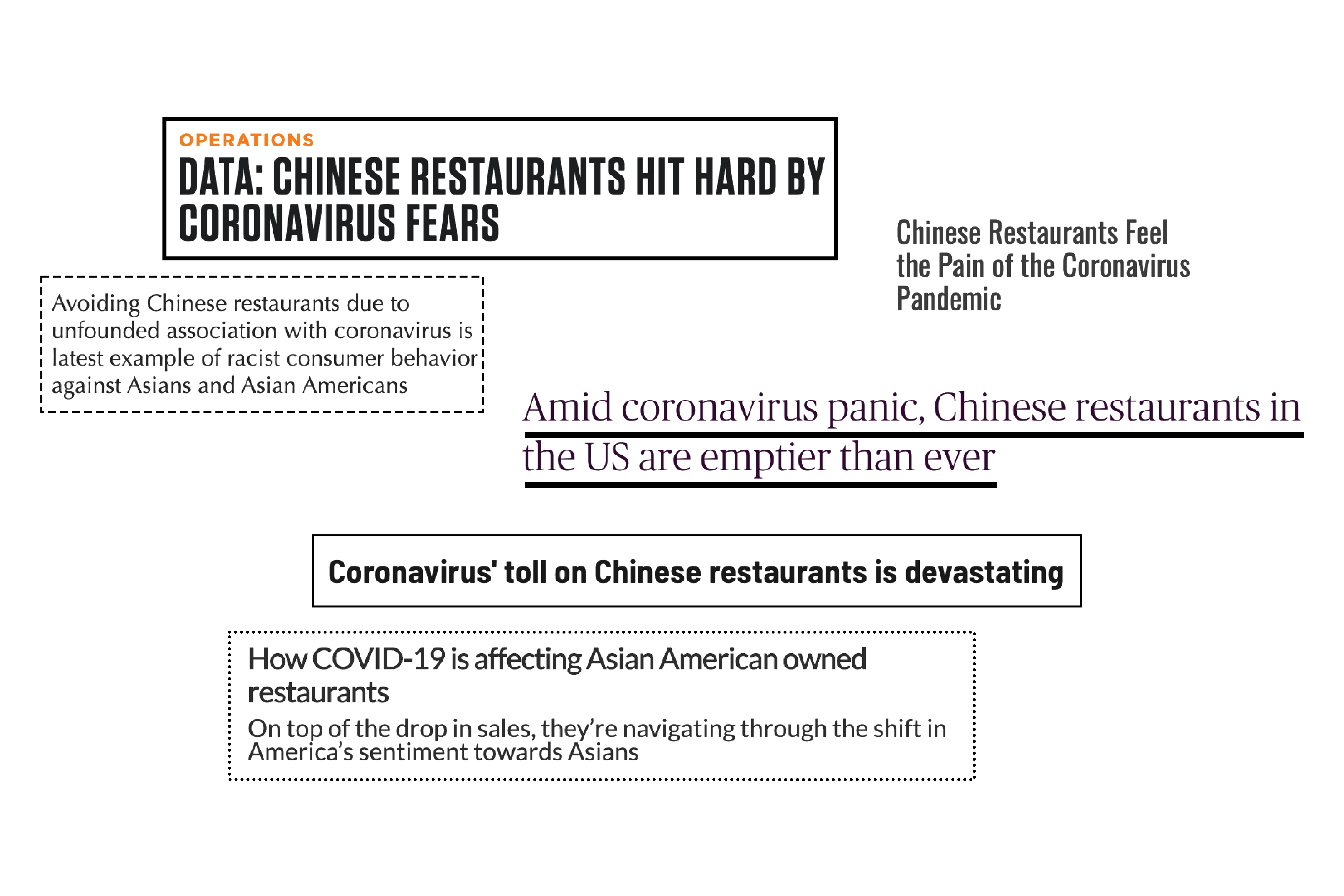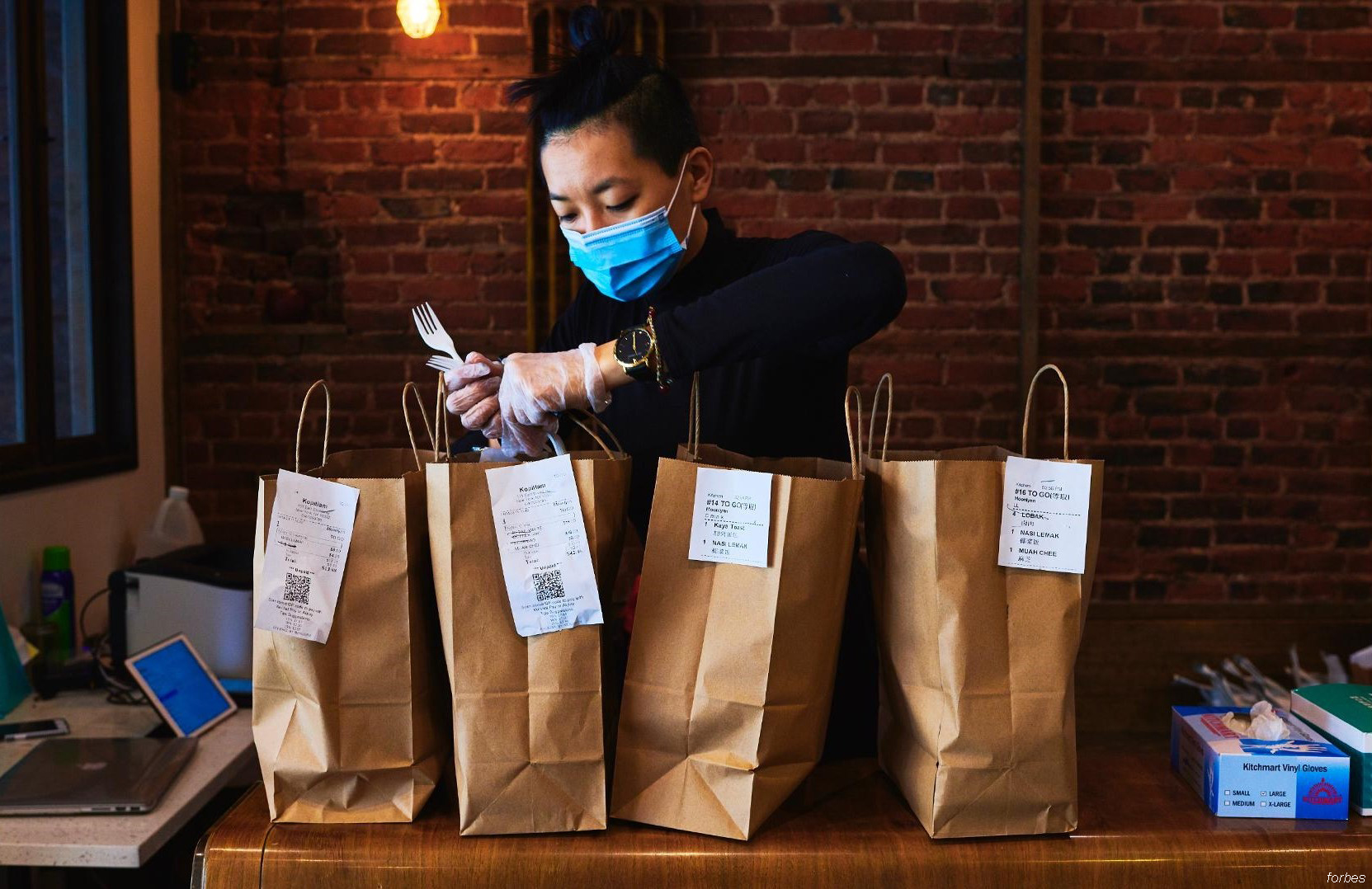

The restaurant industry is essential to New York City’s social and economic fabric. From small, family-owned restaurants and food carts to four-star world-famous establishments, the city abounds with restaurants that offer cuisines from every corner of the globe. And in 2018 more than 60% of NYC restaurant workers were immigrants, 44% were Hispanic and 20% were Asian. Which means the impact of the pandemic and closure order on restaurants is a blow to the most vulnerable sectors of society. According to Yelp, Chinatowns in major American cities are performing worse compared to their surrounding metros in January to November 2020. Additionally Womply stated that 59% of independent Chinese restaurants across America have ceased operations. These mean that the impact of the pandemic and closure order is a blow to the vulnerable community members.
We're interested in exploring how Chinese restaurants are performing amidst the surge of racist sentiments against Asian and Asian American communities in New York City. Our research questions include:
We are using Safegraph Points of Interest weekly foot traffic data from January to June 2020 to map restaurant locations in Manhattan Chinatown, Sunset Park, and Flushing. Additionally, we map selected anti-Asian incidents from the news. We use two analytical methods to understand restaurants’ performance and resiliency:

In the 3 Chinatowns, the number of open restaurants in all cuisine groups dropped in March and started rebounding in June.
The restaurant closure order started on March 17th and the Phase 1 reopening on June 8th might explain this trend.
Click the buttons below to see the change!
While restaurants in all cuisine groups show signals of recovery in June, Chinese restaurants suffered the largest drop in visitors in the first four weeks of restaurant closure order. Chinese restaurants continued to have a stable growth, similar to other cuisine groups. In June, all cuisine groups have relatively reached pre-restaurant closure visitor level, however, Chinese restaurants still had the lowest recovery rate compared to other cuisine groups.
Hover over the chart below to see more information!
.png)
Disease and outbreaks have long been used to rationalize xenophobia. In the map, we locate only a few of the reported anti-Asian incidents reported in New York City in early 2020. The pandemic is covid, but the pandemic is also racism.
Scroll on the map for incidents!
Chinese restaurants in Manhattan’s Chinatown are the least recovered compared to Sunset Park in Brooklyn and Flushing in Queens. Only in Manhattan where the number of open Chinese restaurants in June is fewer than in March.
Click the buttons below to see the animation!
Chinese restaurants suffered the biggest blow and recovered the least compared to other cuisine groups. Other Asian and non-Asian restaurants have reached pre-restaurant closure visitor count. Interestingly, non-Asian restaurants experienced irregular gain and loss patterns, where it peaked in the week of May 25th.
Hover over the chart below to see more information!
Though the difference is slim, Chinese restaurants in Brooklyn Chinatown recovered the least compared to other cuisine groups. Despite the stable recovery rate for all three cuisine groups after the first week of April, only non-Asian restaurants that have reached beyond pre-restaurant closure visitor count.
Hover over the chart below to see more information!
Chinese restaurants are recovering well in Flushing, despite the large drop they experienced in the beginning of restaurant closure order. In fact, only Chinese and Asian restaurants that are reaching pre-restaurant closure order visit count. While non-Asian restaurants suffered the least blow during the restaurant closure order, their recovery rate is not as high as Chinese and Asian restaurants.
Hover over the chart below to see more information!

While at the city level Chinese restaurants in New York City’s main Chinatowns seem to recover as well as other cuisine groups, a comparative study revealed important differences between neighborhoods with some lagging behind. The difference could be attributed to multiple factors, such as demographic make-up, physical infrastructure, food delivery service presence, the suitability of restaurants’ offerings for take-out, and perhaps sentiment against Asian communities. This opens up future research opportunities to draw a causal relationship from these factors to restaurants’ performance. A vaccine might put an end to the pandemic, however, business associations, community leaders, urban planners, and policymakers need to work together to save small businesses.